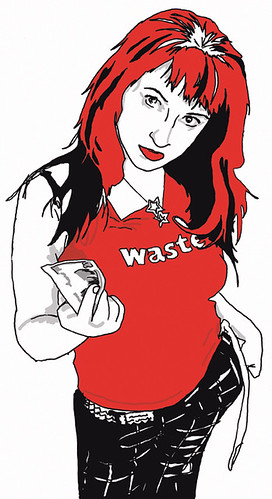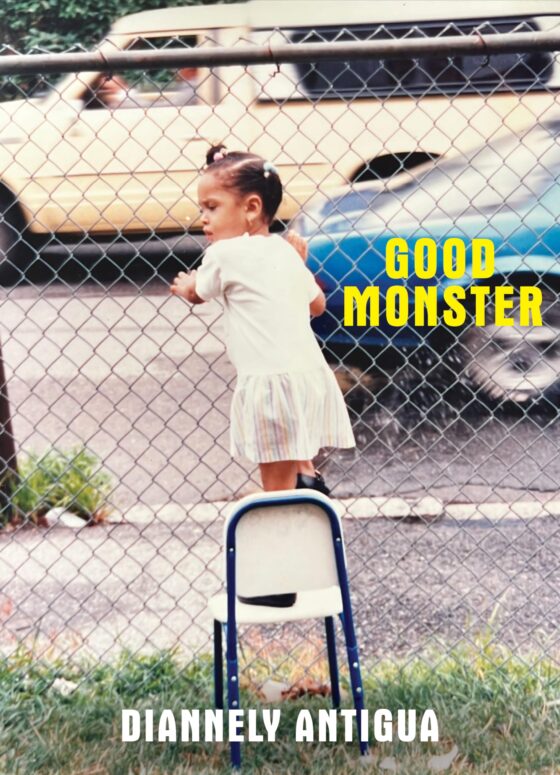 Early on in her stripper memoir Diablo Cody declares “strippers are the most fascinating, inscrutable animals I’d ever observed.” If the number of stripper memoirs that have appeared in the past few years are anything to go by, publishers agree. For a marginalized profession strippers are surprisingly willing to publish their stories. A brief search for ‘stripper memoir’ yields a long and varied list; including several “Confessions Of..” “Secrets From…” “Truth About…” and the blatantly salacious “Sexxfessions…” from authors with agendas that run from exposing the industry as degrading (which most people seem to think it is anyway) to those taking their cues from Paglia and positing stripping as empowering.
Early on in her stripper memoir Diablo Cody declares “strippers are the most fascinating, inscrutable animals I’d ever observed.” If the number of stripper memoirs that have appeared in the past few years are anything to go by, publishers agree. For a marginalized profession strippers are surprisingly willing to publish their stories. A brief search for ‘stripper memoir’ yields a long and varied list; including several “Confessions Of..” “Secrets From…” “Truth About…” and the blatantly salacious “Sexxfessions…” from authors with agendas that run from exposing the industry as degrading (which most people seem to think it is anyway) to those taking their cues from Paglia and positing stripping as empowering.
 Arguably one of the most famous former strippers, Diablo Cody published Candy Girl in 2005; her memoir of one year spent working in several Minnesota strip clubs and a peep show. Cody’s statement about strippers being the most fascinating animals she has ever “observed” is telling; throughout the book Cody’s attitude seems to be that she is different to ‘them,’ her fellow strippers, and beneath her self deprecating commentary there lies something of a superior attitude. Of course Cody, like many strippers, considers herself an “unlikely stripper” who at moments feels “at home, like I was meant to watch these glittering freaks”.
Arguably one of the most famous former strippers, Diablo Cody published Candy Girl in 2005; her memoir of one year spent working in several Minnesota strip clubs and a peep show. Cody’s statement about strippers being the most fascinating animals she has ever “observed” is telling; throughout the book Cody’s attitude seems to be that she is different to ‘them,’ her fellow strippers, and beneath her self deprecating commentary there lies something of a superior attitude. Of course Cody, like many strippers, considers herself an “unlikely stripper” who at moments feels “at home, like I was meant to watch these glittering freaks”.
For an observer she has few insightful comments on strippers, her observations are limited to a string of remarks about silicone and sweeping, harmful, generalizations: “Most sex workers… cite a past incident of sexual abuse in trying to explain the illicit path they’ve stumbled upon.” And: “I envied the girls who’d been stripping for years, even though they all had hammertoes, coke-worn sinuses and intimacy disorders as a result.” The resulting impression is that of an attempt to reveal the dirty truth about stripping without going much further than a reinforcement of stereotypes. Candy Girl is well written and a very funny memoir but not the most perceptive comment on the industry. Although, to be fair, Cody never claims that figuring out stripping was her intention; she writes that she became a stripper “for sport”.
 While in Candy Girl Cody’s workmates are usually little more than background noise, Nickie Roberts gives over half of her memoir to her colleagues as she realizes that it is “not enough just to tell my own story; other voices need to be heard too.” Published in 1986, Roberts’ The Front Line was written because, she says: “Everybody it seems has an opinion about the sex industry and what should or should not be done about it; everybody except us, that is.” The first half of The Front Line is Roberts’ own story and the second consists of monologues by her friends and co-workers: strippers, peep-show dancers, prostitutes and club managers. The diversity of the writing gives us a broader picture of the London sex industry during the 60’s and 70’s.
While in Candy Girl Cody’s workmates are usually little more than background noise, Nickie Roberts gives over half of her memoir to her colleagues as she realizes that it is “not enough just to tell my own story; other voices need to be heard too.” Published in 1986, Roberts’ The Front Line was written because, she says: “Everybody it seems has an opinion about the sex industry and what should or should not be done about it; everybody except us, that is.” The first half of The Front Line is Roberts’ own story and the second consists of monologues by her friends and co-workers: strippers, peep-show dancers, prostitutes and club managers. The diversity of the writing gives us a broader picture of the London sex industry during the 60’s and 70’s.
Roberts addresses a motivation often overlooked in writing about the sex industry: The money. All of the sex-working men and women in The Front Line have come down to London from ‘The North’ leaving behind a certain life of drudgery. Issues of class are notable and discussed angrily in this book. Roberts has scorn for the middle-class women who call her choices immoral: “Why should I have to put up with a middle-class feminist asking me why I didn’t do anything — scrub toilets, even? Rather than become a stripper?” And the Judges who one day are soliciting sex workers and the next handing down hefty fines and sending those same women back onto the streets to earn the money needed to pay them, their “legal pimps” back. Roberts highlights the hypocrisy of middle-class ‘morality’ and the reality of what lies underneath; “the middle classes are the weirdest,” she says. Roberts’ anger is palpable, and at times weighs down the book, which is understandable given that she was writing at a time when strippers were marginalized even more so than today.
Reading this book, although at times angry and upsetting, one gets a sense of solidarity between the men and women in the sex industry. Roberts and the others often talk of their respect for one another because they are in it together: “Every time one of us speaks out about our lives, another connection is forged between us, sex industry workers everywhere.”
Class remains an issue, with the majority of recent memoirs coming from white, middle class, educated women, sometimes dabbling in the sex industry to satisfy a curiosity or even for the purpose of publishing a book or thesis. Furthermore, class is at times used as a starting point; “why would a girl like this (educated, middle class etc…) do this?” This narrow perspective of stripping has not gone unnoticed; when asked in a Rumpus interview what angle she would like to see in a book about stripping, Lily Burana answered that she would like to see one by a woman of color, “what’s up with all the whiteness?!” she asked.
 Like Roberts, Burana dedicates part of her book, Strip City, to the voices of other strippers but she attempts an even deeper understanding of stripping by delving into its history although this is not always easy: “Stripping is an outlaw profession, with but one prevailing philosophy: Take the money and run. As a result, the long and colorful history of exotic dance is overlooked and under-recorded.” Burana succeeds in meeting and sharing the stories of strippers from recent American history; from Dixie Evans, former ‘Marilyn Monroe of Burlesque’ of the 1950’s and creator of the yearly burlesque pageant Miss Exotic World, to Pillow who started stripping as a minor in 1970’s San Francisco, and Scarlett Fever who worked in Times Square between ’75 and ’86. Burana herself worked during some momentous points in stripping history; in the “dawning days of sex-positive feminism” at San Francisco’s Lusty Lady, and at the mid 90’s introduction of House-Fees and reclassification of dancers as Independent Contractors at The Mitchell Brothers’ O’ Farrell Theater, who she subsequently helped to bring a class-action lawsuit against.
Like Roberts, Burana dedicates part of her book, Strip City, to the voices of other strippers but she attempts an even deeper understanding of stripping by delving into its history although this is not always easy: “Stripping is an outlaw profession, with but one prevailing philosophy: Take the money and run. As a result, the long and colorful history of exotic dance is overlooked and under-recorded.” Burana succeeds in meeting and sharing the stories of strippers from recent American history; from Dixie Evans, former ‘Marilyn Monroe of Burlesque’ of the 1950’s and creator of the yearly burlesque pageant Miss Exotic World, to Pillow who started stripping as a minor in 1970’s San Francisco, and Scarlett Fever who worked in Times Square between ’75 and ’86. Burana herself worked during some momentous points in stripping history; in the “dawning days of sex-positive feminism” at San Francisco’s Lusty Lady, and at the mid 90’s introduction of House-Fees and reclassification of dancers as Independent Contractors at The Mitchell Brothers’ O’ Farrell Theater, who she subsequently helped to bring a class-action lawsuit against.
The result of such a historical perspective is that the reader is witness to the changes that have occurred in the stripping industry; from choreographed routines and costumes in the old burlesque halls to it’s current incarnation of hustle, competitiveness and “contact sport” in the corporate ‘Gentlemen’s Clubs’. “The atmosphere became more competitive,” says Pillow, “it became downright mean.”
Strip City begins with a statement similar to The Front Line: “While I’ve had ample exposure to what everyone else feels about stripping, what eludes me still… is how I really feel about it.” Burana doesn’t have an agenda to provide the last word on stripping or confer judgment upon the sex industry; her cross-country strip-trip and subsequent memoir are for her alone, it is a case of “needing to do this for myself.”
The success of Strip City, and it is one of the most respected stripper memoirs, is in its balance; as Burana says herself “I no longer have anything to prove… now I’m just here to bear witness, no illusions, no agenda, no filter of idealism.” This stance allows Burana to honestly illustrate what stripping is like, from the highs: “..indescribable bliss resting on the blade of a knife… I would be helpless to try to explain it, but if you had ever known that sensation you’d never want to leave that warm, wet spot on the lip of the maw.” To the lows: “I regret knowing that some club owners and managers… refer to the dancers who work for them, and fill their pockets, as ‘bitches’ and ‘whores.'” Indeed Strip City is shot through with realizations and re-examinations of things previously missed while she was a stripper the first time around, thanks to her “selective vision.” Burana subsequently struggles with how stripping will be represented in her book and hesitates to include the bad stuff in the fear that negative information will be used against her, the clubs, the dancers and to advance a conservative agenda. Nevertheless she is honest: “Sure, I want to show the world that strippers can be capable, thinking, feeling people, able to set boundaries, to care for other people and ourselves. But taken too far, such emphasis on the positive casts me as a Paglian caricature — all triumph and no clue. When I think of all the times I huffed out, testily, ‘I’ve never been degraded! I’ve never been exploited!’ I wish I could reach back in time and put a hand over my own stupid mouth.” Burana doesn’t cheat her readers, she gives an honest account of the stripping industry. The polarization of many debates on sex work overlook the fact that this is a complicated business; Burana shows us that it is not all good, not all bad and can not be summed up by either extreme of ’empowering’ or ‘degrading’ and as such Strip City is the most honest stripper memoir I have read.
Early on Burana writes: “People look for themselves in books and movies. They count on those touchstones, not so much for gospel as affirmation that others have walked the same path. But for strippers there is no Giovanni’s Room, no Easy Rider, no Basketball Diaries, no Well of Loneliness. Perhaps if there were an intellectual tradition, a floozerati that inspired a body of work to consult and a philosophy to impart, I’d feel less marooned.” With stripping edging closer to the mainstream there are more and more works to consult, none may answer all our questions or share our view on the industry, but the body of work and shared experience assures us that others have been there too.
**
illustrations by Laurenn McCubbin




